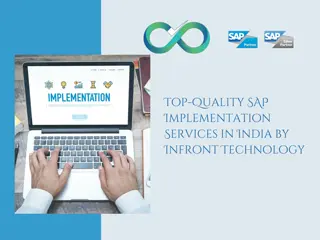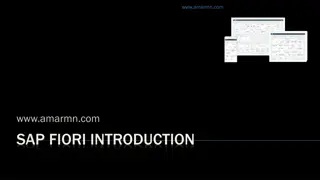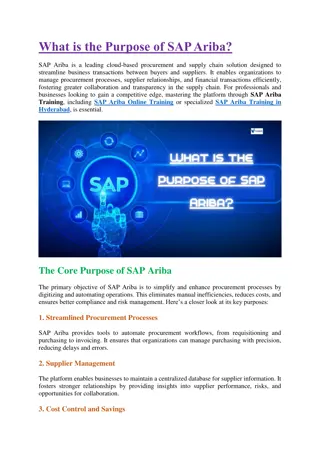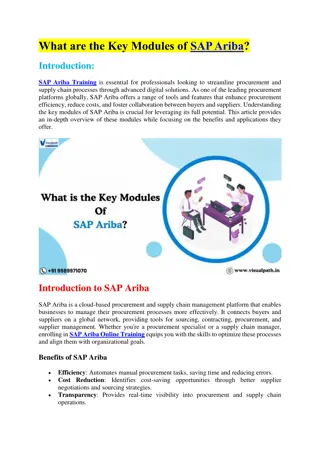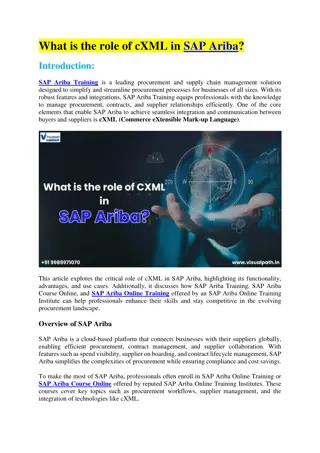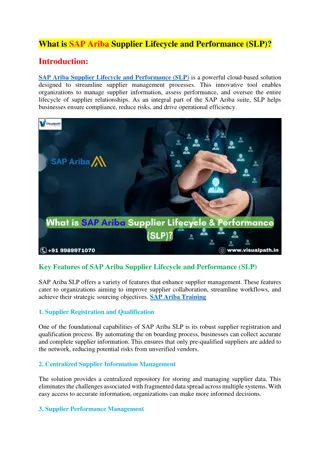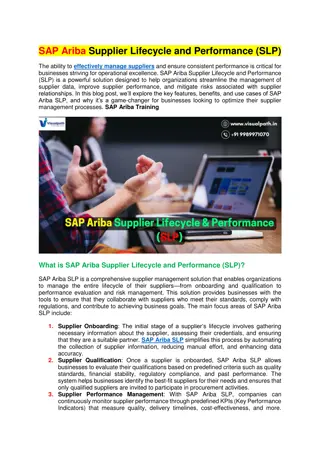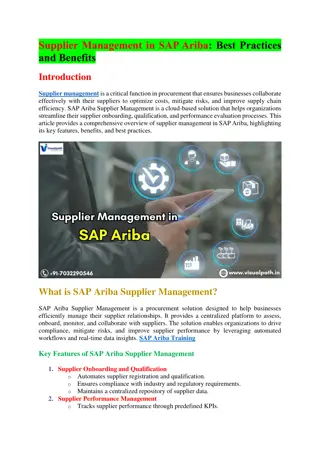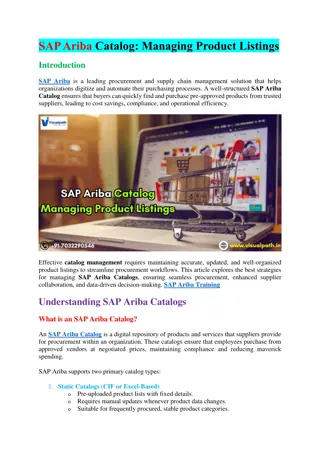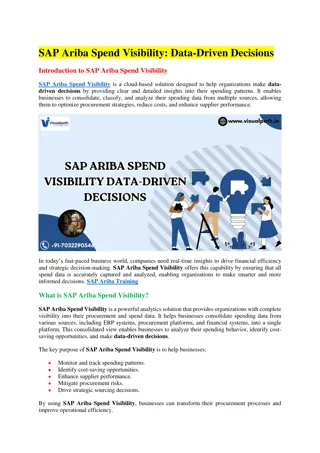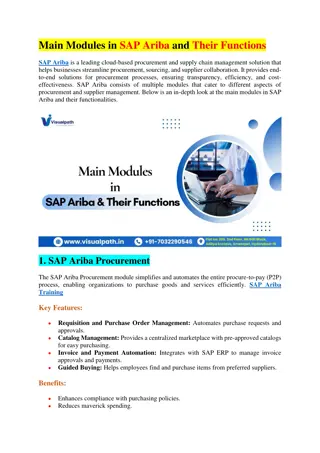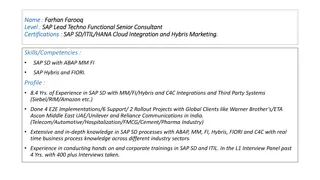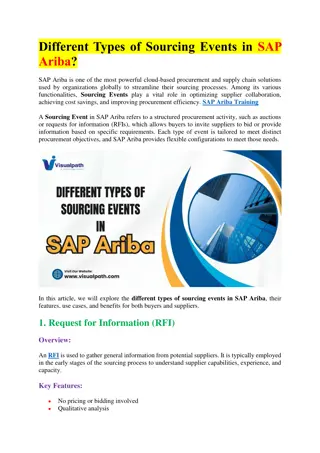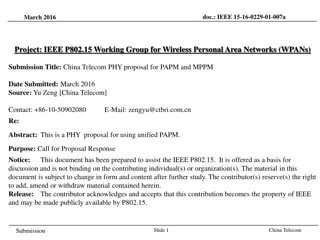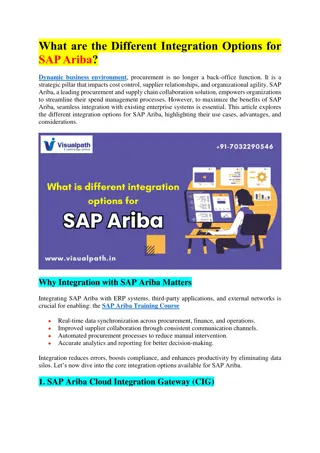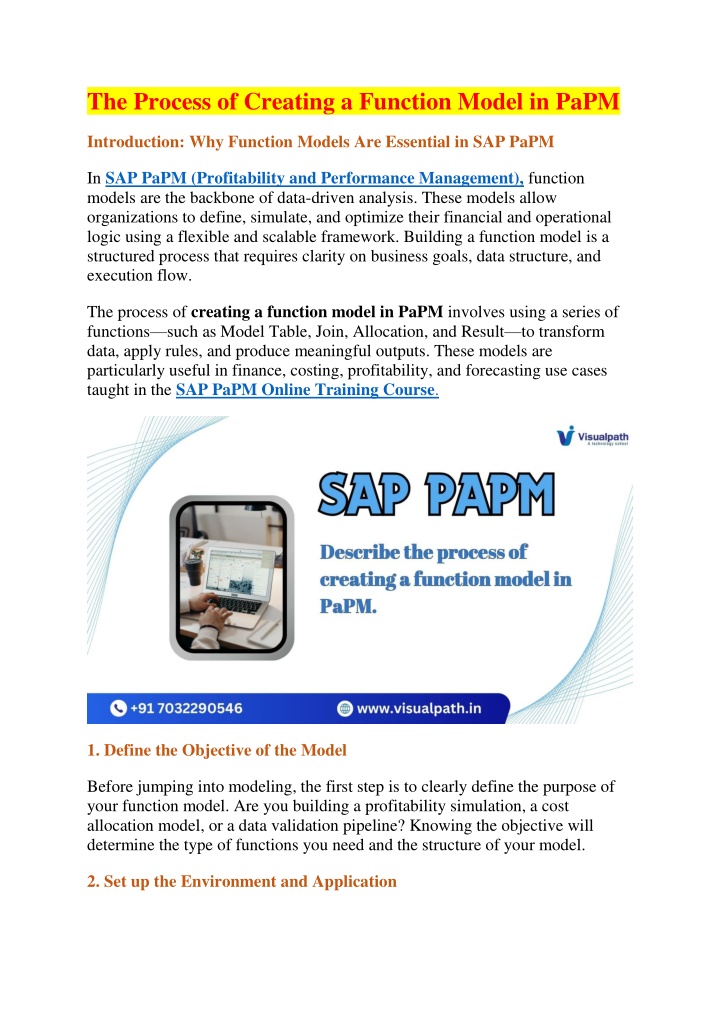
SAP Training Institute in Hyderabad | Best SAP PaPM Online
Take your career to the next level with VisualPath, a leading SAP PaPM Training Institute in Hyderabad. Enroll in our SAP PaPM Online Training to gain hands-on experience through real-time projects, flexible weekend classes, and lifetime access to re
Download Presentation

Please find below an Image/Link to download the presentation.
The content on the website is provided AS IS for your information and personal use only. It may not be sold, licensed, or shared on other websites without obtaining consent from the author. If you encounter any issues during the download, it is possible that the publisher has removed the file from their server.
You are allowed to download the files provided on this website for personal or commercial use, subject to the condition that they are used lawfully. All files are the property of their respective owners.
The content on the website is provided AS IS for your information and personal use only. It may not be sold, licensed, or shared on other websites without obtaining consent from the author.
E N D
Presentation Transcript
The Process of Creating a Function Model in PaPM Introduction: Why Function Models Are Essential in SAP PaPM In SAP PaPM (Profitability and Performance Management), function models are the backbone of data-driven analysis. These models allow organizations to define, simulate, and optimize their financial and operational logic using a flexible and scalable framework. Building a function model is a structured process that requires clarity on business goals, data structure, and execution flow. The process of creating a function model in PaPM involves using a series of functions such as Model Table, Join, Allocation, and Result to transform data, apply rules, and produce meaningful outputs. These models are particularly useful in finance, costing, profitability, and forecasting use cases taught in the SAP PaPM Online Training Course. 1. Define the Objective of the Model Before jumping into modeling, the first step is to clearly define the purpose of your function model. Are you building a profitability simulation, a cost allocation model, or a data validation pipeline? Knowing the objective will determine the type of functions you need and the structure of your model. 2. Set up the Environment and Application
Once the goal is defined, create an application within SAP PaPM. This application serves as the container for all your functions, data tables, and configurations. Assign the necessary authorizations and choose the appropriate environment (development or production). 3. Create and Configure Data Sources Import or connect your master and transactional data using Model Table or View functions. You can pull data from SAP S/4HANA, SAP BW, or third- party systems. Each source must be mapped correctly with field names, data types, and primary keys. In the middle of the process, you start integrating your logic using various transformation functions. At this point, knowledge from a SAP PaPM Course Online becomes valuable as it teaches how to design accurate models while optimizing for performance. 4. Build the Function Chain With data in place, begin constructing your function chain. A function model is a series of interconnected functions executed in sequence. Some commonly used functions include: Model Table: Stores static or source data. Join Function: Combines data from multiple tables. Function Formula: Used to calculate or transform fields. Allocation: Distributes values based on rules. Result Function: Produces the final output for reporting or analysis. Each function should be logically connected, tested, and validated at every stage. 5. Apply Filters and Validation Rules To control the volume of data and focus on specific business units or products, apply filters within your function configuration. You can also define validation rules to ensure that data integrity is maintained across functions. These filters are essential for performance and precisionSAP PaPM Online Training. 6. Simulate and Execute the Model Once all functions are in place, simulate the model to check if the expected outcomes are achieved. The simulation allows you to preview data flow, troubleshoot errors, and validate results before pushing the model to production.
Use trace functionality to analyze each step and confirm logic accuracy. PaPM allows partial simulations as well, which is useful when troubleshooting large models. 7. Schedule and Automate Execution Once validated, schedule your function model to run at predefined intervals using process templates. Automation ensures timely data refresh and ongoing analysis. Define dependencies and set alerts for execution failures or inconsistencies. This level of automation and real-time execution makes SAP PaPM a vital tool in performance-driven environments. Professionals who want to manage such complex models effectively should undergo SAP PaPM Training for hands-on knowledge and business scenarios. Conclusion: Function models are the engine that powers SAP PaPM s advanced analytics. By understanding how to structure, configure, and simulate function chains, users can turn raw data into strategic insights. Whether it's profit simulation or cost allocation, function modeling is at the heart of enterprise performance management. Trending Courses: Artificial Intelligence, Azure AI Engineer, Azure Data Engineering Visualpath stands out as the best online software training institute in Hyderabad. For More Information aboutthe SAP PaPM Online Training Contact Call/WhatsApp: +91-7032290546 Visit: https://visualpath.in/sap-papm-online-training.html




